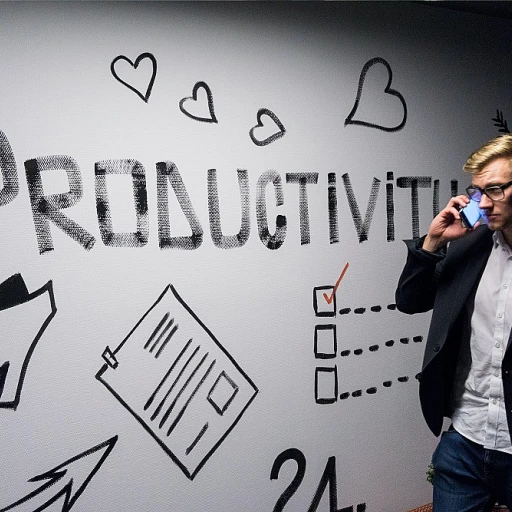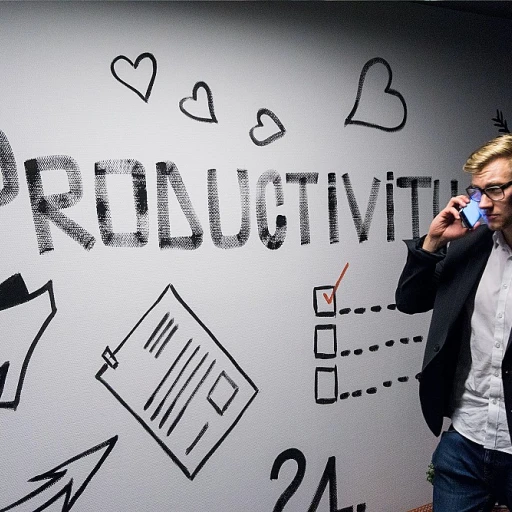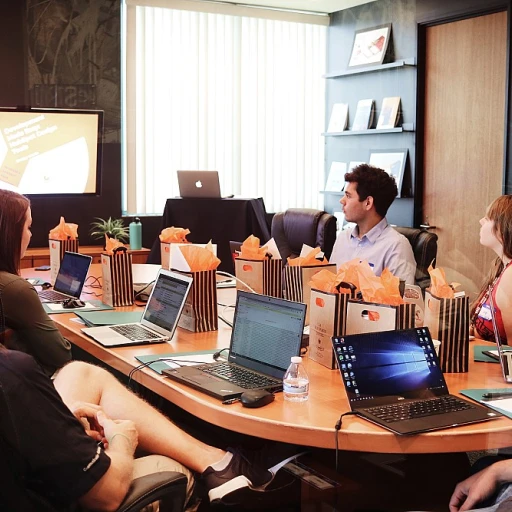Understanding Virtual Job Tryouts
Decoding the Concept of Virtual Job Tryouts
In the evolving landscape of recruitment, virtual job tryouts (VJTs) have emerged as a pivotal tool for assessing candidates in a more dynamic and interactive way. These tryouts are essentially pre-employment assessment tests that simulate real job scenarios, allowing candidates to demonstrate their skills and personality traits beyond the traditional CVs. This approach not only helps in assessing candidates' problem-solving abilities and customer service skills but also provides a comprehensive view of their potential fit for the role.
Virtual job tryouts are designed to be more than just a series of test questions. They aim to replicate the actual work environment, offering candidates a taste of what the job entails. For instance, a VJT for a flight attendant might include scenarios where candidates must respond to customer service challenges or manage in-flight emergencies. This realistic depiction aids in evaluating how candidates will perform under pressure and their response to unforeseen challenges.
One of the significant advantages of virtual job tryouts is the ability to assess candidates without the constraints of time and location. Candidates can participate in these assessments at their convenience, which is particularly beneficial in today's global job market. Moreover, the time limit set for each task ensures that the hiring process remains efficient, allowing employers to make quicker and more informed decisions.
As organizations continue to integrate technology into their hiring processes, the role of VJTs becomes increasingly crucial. They not only streamline the recruitment process but also enhance the candidate experience by providing a fair and transparent assessment platform. For more insights on how employee experience impacts engagement, you can explore this resource.
Enhancing Candidate Experience
Creating a Positive First Impression
Virtual job tryouts play a crucial role in enhancing the candidate experience during the hiring process. By allowing candidates to engage in realistic work scenarios, employers can create a positive first impression, showcasing their company culture and values. This initial interaction is often the foundation upon which candidates build their perception of potential employers. When candidates feel valued and respected during job tryouts, it increases their enthusiasm for the role and aligns their aspirations with the company's mission.
Assessing Real-World Skills
These virtual assessments provide a unique opportunity to gauge a candidate's real-world skills effectively. By moving beyond traditional CVs and interviews, candidates can demonstrate problem-solving abilities and critical thinking skills relevant to the job. This approach helps in identifying top candidates who may excel in customer service roles, such as flight attendants, where quick thinking and personality are crucial. Assessing these skills through job tryouts ensures a more informed hiring decision and reduces the delta between candidate expectations and actual job performance.
Time-Efficient for Employers and Candidates
The use of virtual job tryouts also addresses the constraints of time in the recruitment process. With a time limit placed on tryout questions or employment assessment tests, both employers and candidates benefit from an efficient process. Candidates no longer have to invest time in lengthy procedures, while employers can swiftly gauge aptitude and readiness. This efficiency not only speeds up the hiring process but also ensures that both parties make well-informed decisions, leaving more room for enthusiasm and commitment to the company.
Personalized Feedback
Virtual assessments are tailored to respond to candidate inputs, allowing for immediate and personalized feedback. This ongoing response mechanism helps candidates understand their strengths and areas for growth, enhancing their experience and investment in the hiring journey. By providing constructive feedback, employers foster a sense of development and transparency, pivotal for establishing trust with job seekers. For more strategies on improving candidate engagement and feedback mechanisms, explore our insights on
mastering employee retention and referral strategies.
Impact on Employer Branding
Strengthening the Employer Brand Through Virtual Job Tryouts
Implementing virtual job tryouts in the hiring process can have a profound impact on employer branding. Companies that incorporate these modern assessment methods often project an image of innovation and adaptability. This link to technology not only attracts tech-savvy candidates but also positions the company as forward-thinking and engaging.
In the competitive job market, employers need to stand out, and virtual job tryouts offer an opportunity to do just that. By using assessments that go beyond traditional CV reviews, businesses can highlight their commitment to creating a thorough and inclusive hiring process. This dedication can enhance a company's reputation among potential job seekers.
Moreover, when candidates participate in virtual job tryouts, they often appreciate the comprehensive assessment of their skills and personality. This positive experience can lead to favorable word-of-mouth publicity, further boosting the company's image. Additionally, capitalizing on virtual tryouts allows employers to gain insights into candidates' problem-solving abilities and customer service potential, factors critical to various roles, from flight attendants to customer service representatives.
However, successful implementation demands a meticulous approach to designing assessment tests and crafting engaging tryout questions. The ease and accessibility of a virtual job tryout, along with way it is integrated into the hiring process, can influence candidates' perceptions significantly. Offering clear instructions, timely feedback, and a seamless technological experience demonstrates respect for the candidates’ time and investment, further contributing to a positive employer brand.
Ultimately, the value virtual job tryouts bring to employer branding cannot be overstated. The approach not only helps assess candidate compatibility but also communicates the company's values and strengths. For insights into how employee benefits contribute to total compensation and influence employer branding, explore the
impact of employee benefits.
Integrating virtual job tryouts effectively aligns with the broader trend of enhancing candidate experiences, reinforcing a company's standing as a desirable place to work.
Technological Integration
Seamless Technological Integration
The technological underpinnings of virtual job tryouts play a crucial role in their success and effectiveness within the hiring process. Integration of advanced assessment platforms allows a holistic evaluation of candidate skills by simulating real-work scenarios. From assessing customer service capabilities to evaluating problem-solving in fast-paced environments like those encountered by flight attendants, technology enables a richer, more dynamic approach than traditional employment assessment methods.
Modern virtual job tryouts often incorporate sophisticated algorithms to adjust difficulty levels, adapt questions and even introduce a time limit to gauge a candidate's response under pressure. This dynamic element ensures that job seekers face a realistic depiction of job challenges they may encounter, ultimately refining the hiring process.
Moreover, the deployment of virtual job tryouts reduces reliance on conventional metrics such as CVs alone. Candidates are no longer judged merely on past experiences, but on real-time performance and potential as demonstrated during the virtual assessment. Employers, hence, are better equipped to assess candidates for crucial skills - be it technical, personal, or interpersonal - that might not be evident in a resume.
Furthermore, platforms like the Delta VJT provide employers the flexibility to tailor job tryout questions to align with specific organizational needs. This bespoke nature of virtual job assessments not only augments the candidate's evaluation but also ingrains the company's specific expectations into the recruitment framework.
Ultimately, technological advancements elevate the virtual job tryout arena, fostering an environment where both candidates and employers enjoy a streamlined, comprehensive, and insightful employment assessment experience.
Challenges and Considerations
Addressing the Hurdles of Virtual Assessments
Integrating virtual job tryouts into the recruitment process brings its own set of challenges that organizations need to gracefully navigate. While enhancing the candidate experience and aligning with employer branding strategies, understanding these factors is crucial to ensuring a smooth transition.
One prominent concern is the technological capacity of both the employer and the candidates. A reliable digital platform is essential to administer these assessments effectively. The VJT test must operate without glitches, as technical failures can skew results and frustrate candidates. Organizations should invest in robust systems that support seamless test questions and vjt tests, enhancing both user experience and data accuracy.
Moreover, the delta vjt framework demands a careful construction of tryout questions to assess a diverse range of skills—be it problem-solving, customer service, or personality traits. Crafting such multi-dimensional employment assessments can be resource-intensive, yet the return on investment is tangible in terms of precision in hiring.
Considering the time allocation for each job tryout is another critical factor. A flexible yet strategic approach is needed to set appropriate time limits, as not every role, from a flight attendant to a customer service representative, requires the same assessment depth. Varying the degree of scrutiny ensures efficiency without overwhelming job seekers.
From a candidate's perspective, virtual job assessments might lack the tactile nature and immediacy of traditional interviews. This can lead to feelings of distance or detachment, potentially affecting their response delta. Employers must bridge this gap by clearly communicating expectations and offering preparatory resources ahead of the virtual assessments.
In conclusion, while virtual job tryouts are reshaping the hiring process with their promise of improved precision and fairness, organizations must conscientiously address these challenges. With careful planning and execution, they can fully leverage the benefits while maintaining an accurate and efficient talent acquisition pipeline.
Future of Recruitment with Virtual Job Tryouts
The Road Ahead for Recruitment: Virtual Job Tryouts Leading the Way
As technology continues to evolve, virtual job tryouts (VJT) are paving the road ahead for recruitment processes. Their ability to assess candidates efficiently, using personality and skills tests, aligns with the fast-paced dynamics of modern hiring. The future is all about leveraging these virtual tests to streamline the hiring process, offering a more dynamic and interactive approach.
Incorporating virtual job tryouts into recruitment strategies not only enhances candidate experiences but also optimizes time and resources. Candidates no longer depend solely on their CV performance; they can showcase their abilities and handle real-time job-related scenarios. For some roles, such as customer service or problem solving positions, VJT assessments offer an authentic peek into how candidates will likely perform on the job.
Employers are placing a stronger emphasis on pre-employment assessment tests, focusing on factors like time management and competence in handling job-specific tasks. The delta vjt, for instance, is an excellent tool to evaluate how potential hires respond to a variety of situations, ranging from technical challenges to emotional intelligence scenarios crucial for roles such as a flight attendant.
However, it's not all smooth sailing. A few challenges present themselves. Balancing the right mix of virtual assessments, avoiding an overload of tryout questions, and setting appropriate time limits are essential components to consider. There's a growing need for refining test questions to ensure they measure candidate potential accurately without increasing anxiety levels.
In conclusion, as organizations embrace these tools in their hiring toolkit, they solidify their position in attracting top-tier talent. Virtual job tryouts represent a strategic investment, a commitment to future-proofing recruitment strategies. As this method becomes more sophisticated, it will define how organizations and job seekers interact in the employment landscape.













